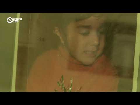He then died in car accident in 1999, 3 weeks after the premiere of his final film, The World is Not Enough.
So a verified Army twitter account posts youtube link to Ghost in Machine video.
That YouTube account created account in Nov 2021 has only this video posted.
Earliest archive link has 108 subs at 2 days ago, account now has over 2k.
Web address at end of video is goarmysof. com which is currently "suspended." Not down to massive traffic, but suspended. An apparently government website got suspended?
Website Registered through Godaddy as early as 4/5/16. Registrant is Special Operations Recruiting Battalion out of North Carolina.
Now I'm not sure how special operations command relates to Special Operation Forces, but it appears the two would be closely related, no?
Interesting Notes on the video: The cartoon in the video of the Clown/Ghost dancing, is from a 1933 Betty Boop film "Snow White" The song the ghost is signing is St. James Infirmary. The clown/ghost sings it about a "dead" Betty Boop, as the song is about a young person cut down in their prime due to morally questionable behavior. (This song is not the one played throughout the video however.)
That song is "Last Goodbye" by Eric Kinny. A film composer based in Nashville. Works have appeared in many popular productions. Vocals on song are by Danica Dora.
Also many references to SOF being "everywhere" with strong hints at being involved in culture "movies, tv, art, music, social media, etc." with shots of all those things. The clown motif reminds of The Joker movie, but more so, CIA clowns. The Clown in the cartoon is unmasked as a ghost at the moment the singer says "goodbye".
The official ops group is the 4th Psychological Operations Group (Airborne) based in Fort Bragg, NC. Although activated in 2011, it was originally constituted in 1967 for operations in Vietnam. Later in Grenada, Panama, Somalia and Haiti.
So while this Op grp doesn't have direct ties to the Ghost Army of WWII, the video makes it clear that it operates in the same spirit as its fore-bearer.
Definitely a great plot thickener.
St. Patrick did not banish the snakes from Ireland. After the last Ice Age, snakes never returned to the Emerald Isle.
Neither is there proof that Patrick used the three-leaf shamrock to impart the doctrine of the Trinity to the fifth-century pagan Irish. The first such reference is from a botanical catalogue published in 1726. Neither is there evidence that it was Patrick who combined pagan and Christian imagery into the Celtic cross.
Nor was Patrick actually Irish. Nor was he canonized by a Pope. Nor was his real name Patrick.
None of it matters. The true story of Maewyn Succat—most likely born in today’s Scotland or Wales—is better than the myth.
Captured by raiders as a 16-year-old in northern Britain, Patrick was taken across the Irish Sea by pirates and sold into slavery. Escaping from six years of bondage after receiving a spiritual vision, Patrick returned to Ireland decades later, armed only with a mystic’s faith, to convert the island to Christianity, abolishing slavery and human sacrifice in the process.
“Patrick was really a first—the first missionary to barbarians beyond the reach of Roman law,” Thomas Cahill writes in How the Irish Saved Civilization. “The step he took was in its way as bold as Columbus’s, and a thousand times more humane.”
Around 433 A.D., Patrick returned to Ireland against the wishes of his family. His mission, baptizing the Irish pagans, ordaining priests, and building churches and monasteries, would last the final 30 years of his life in Ireland.
Amazingly, two of Patrick’s writings survive: Confessio, a short, autobiographical account of his life, and “Letter to Coroticus,” the repudiation of a marauding king and his soldiers’ brutality. Both represent the trials and hard-won spirituality of Patrick (from Patricius, which derives from the Latin word for “father figure,” which he adopted after becoming a priest.)
“We know from reading his “Letter to Coroticus” that Patrick was very gutsy. He was fearless and he gave of himself unselfishly,” says Rev. Michael Roach, pastor at St. Bartholomew in Manchester, Maryland, who is of Irish heritage and visits the country each year. “That’s why the Irish love him.”
Perhaps not surprising, given his own experience, Patrick becomes one of the earliest identifiable anti-slavery activists in western civilization. In Confessio, he writes how he was “humbled every day by hunger and nakedness” during his six years tending cattle in the Irish wilderness.
In particular, Patrick condemns and calls out the bondage of Irish women while taking note of their bravery and resilient spirit.
From How the Irish Saved Civilization:
“The papacy did not condemn slavery as immoral until the end of the 19th century, but here is Patrick in the 5th century seeing it for what it is . . . Elsewhere he lauds the strength and courage of Irish women: ‘But it is the women kept in slavery who suffer the most—and who keep their spirits up despite the menacing and terrorizing they must endure. The Lord gives grace to his many handmaids; and though they are forbidden to do so, they follow him with backbone.”
By Patrick’s death on March 17, 461, or shortly thereafter, the Irish ended their slave trading and they did not take it up again. (His remains are reputedly buried at Down Cathedral, Downpatrick, Ireland.)
In one of the great coincidences of history, Patrick’s return to Ireland preceded the sack of Rome by the Vandals and Visigoths and the fall of the Roman Empire by a few decades. And it’s Cahill’s thesis that Patrick’s introduction of Christianity, Latin, and the literary canon of the West—tediously transcribed by secluded Irish monks—preserved the great writings of the Greeks and Judeo-Christian culture through the burning of Rome and the ensuing Dark Ages.
For the religious-minded, it is Patrick’s spiritual journey, recounted in Confessio, which continues to inspire to this day. He describes himself as a sinner in the opening lines and acknowledges that he was not a good Christian and that he did not know “the true God” when he was kidnapped and forced by his slave master to become a shepherd. He also admits to a grave sin at age 15 (the exact nature remains unknown), but which nearly prevents his religious appointment to Ireland 30 years later.
Enslaved in a land far from home, unfamiliar with Gaelic, without companionship or comfort, Patrick discovers the only hope available to him. He writes in Confessio that he had begun to offer “up to 100 prayers a day, and in the night a like number.” He prayed as he “stayed out in the forest and on the mountain” and before daylight in “the snow, in icy coldness, in rain.”
Then, in his early 20s, while asleep one evening, a voice in a dream tells Patrick that he would soon be departing for his land of origin. Soon afterward, Patrick writes that he heard another voice in another dream say to him, “Behold, your ship is ready.”
Well inland, however—the vessel, which would carry him home was some 200 miles away, he’d later recall—Patrick started to walk the unfamiliar landscape. Fleeing his slave master, he made his way until he reached the ship he’d been told of in his vision. Although an escaped slave, Patrick convinced several members of the crew to stow him away.
It was some years later, after he’d reunited with his family in northern Britain, that Patrick received his calling to become a priest and return to Ireland. With his education already disrupted, Patrick went about mastering Latin and learning Christian theology for years in France before he was ordained a priest and then a bishop.
“He struggled,” said Msgr. Stuart W. Swetland, formerly of Mount St. Mary’s Seminary in Thurmont, MD and currently president of Donnelly College in Kansas City, KS. “Patrick did not, as we can relate to today, have an easy time going back to school and learning Latin later in life.”
Patrick later wrote that he hesitated writing Confessio sooner because he had remained embarrassed about his lack of formal education.
In Ireland, the Feast of St. Patrick has been celebrated for centuries, if not more than a millennia, and March 17 is considered a holy day of obligation. In fact, until recently, the pubs were closed in Ireland on the holiday. In the United States, St. Patrick’s Day began with parades in Boston and New York by Irish immigrants in the mid-18th century before devolving into its current spectacle.
“Drinking green beer doesn’t make you Irish, it just makes you pee,” says Rev. Jack Ward, a Baltimore Irish-American priest, with a laugh. “Real Irish men and women have a place in their heart for St. Patrick.”
pasted from 2017 Baltimore Magazine Article.
It seems as though every time I see a logo of some globalist outfit with ties to Gates or some future hell hole program they are trying to implement, the logo is usually a color-spectrum wheel of some sort.
I want to collect them all, but when I search for them, because I can't remember all the company names, all I get are corporate logos changed for PRIDE month.
anyone else have a lead?
and congratulate yourself on being able to withstand the most aggressive brainwashing operation in the history of mankind.
Then get back to work, the red pill factory needs you soldier!





















